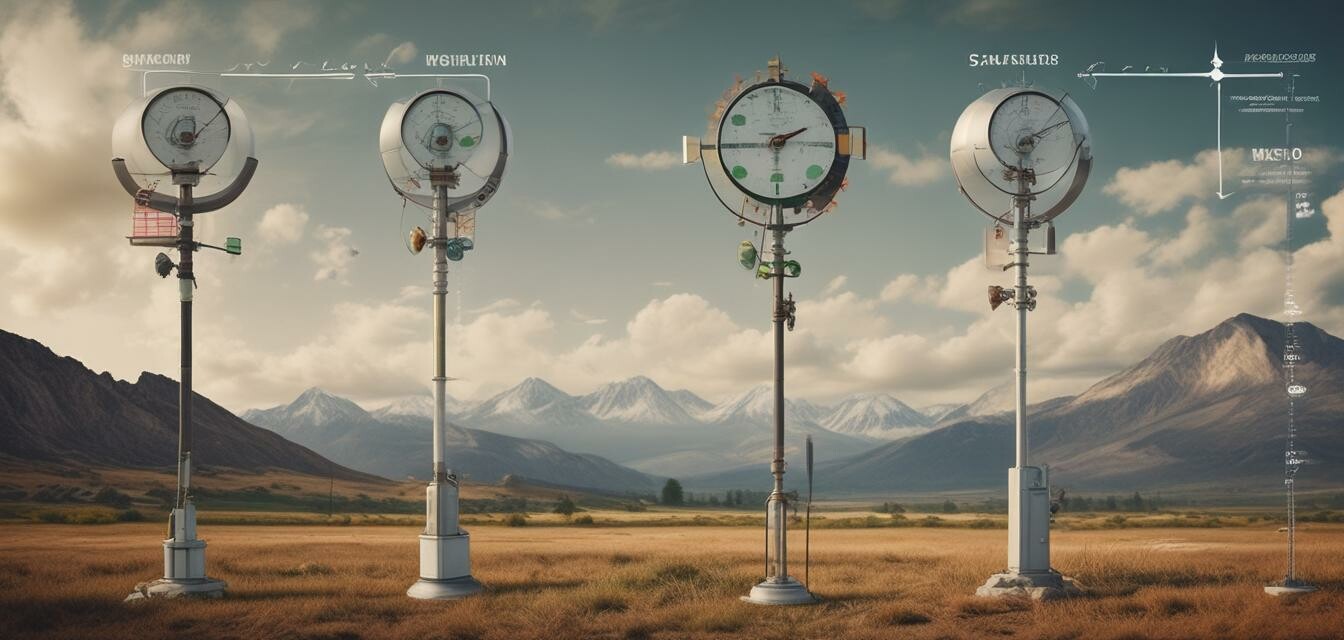
Understanding Different Sensors in Weather Stations
- Weather stations contain various sensors that measure specific atmospheric conditions.
- Understanding how these sensors work can enhance the accuracy of the data collected.
- Different sensors provide unique insights into weather patterns, making them crucial for monitoring.
- Proper installation and maintenance of these sensors are vital for optimal performance.
Weather enthusiasts and professionals alike rely on weather stations for accurate readings. The sensors within these devices play a key role in data accuracy and weather monitoring. This article will delve into the different types of sensors found in weather stations, explaining how each works and their importance in collecting reliable weather data.
Types of Sensors in Weather Stations
Weather stations utilize various sensors, each designed for specific measurements. Below is a list of common sensor types:
- Barometers
- Digital anemometers
- Rain gauges
- Smart thermometers
- Solar weather cameras
Barometers
Barometers measure atmospheric pressure, which can indicate weather changes. Higher pressure usually correlates with fair weather, while falling pressure can signal upcoming storms.
Digital Anemometers
Used to measure wind speed and direction, digital anemometers are essential for understanding wind pattern behaviors. This data can be vital for weather forecasting and aviation.
Rain Gauges
These sensors measure the amount of precipitation over a specific period. Accurate readings are crucial for agricultural planning and flood forecasting.
Smart Thermometers
Smart thermometers provide temperature readings, often featuring Wi-Fi capabilities for remote monitoring. They are essential for understanding temperature fluctuations and climate trends.
Solar Weather Cameras
These cameras provide visual data, enhancing the information gathered by other sensors. They can show cloud cover, snowfall, and other visual weather phenomena.
How Sensor Accuracy Affects Data
Each sensor's accuracy significantly impacts weather monitoring and forecasting. Here's a table summarizing the factors that can affect sensor performance:
| Sensor Type | Factors Influencing Accuracy |
|---|---|
| Barometers | Altitude and local temperature conditions |
| Digital Anemometers | Obstructions nearby and sensor calibration |
| Rain Gauges | Placement (e.g., location of trees or buildings) |
| Smart Thermometers | Direct sunlight and airflow around the device |
| Solar Weather Cameras | Lens cleanliness and camera positioning |
Tips for Optimal Sensor Performance
Maintaining and Installing Weather Station Sensors
- Ensure that your barometer is calibrated regularly for accurate pressure readings.
- Install anemometers away from buildings and trees to avoid obstruction.
- Place rain gauges in an open area for unobstructed rainfall collection.
- Keep smart thermometers sheltered from direct sunlight.
- Regularly clean solar weather camera lenses to maintain image clarity.
The Importance of Combining Data
To fully understand weather patterns and phenomena, it's essential to collect data from multiple sensors. For instance, correlating temperature data from smart thermometers with precipitation data from rain gauges can provide deeper insights into local weather conditions.
Data Trends and Patterns
By utilizing data from various sensors, users can identify trends over time:
- Temperature and precipitation correlations for seasonal changes.
- Wind patterns influencing storm tracking.
Conclusion
Understanding the different sensors in weather stations is crucial for accurate data collection and forecasting. Each sensor contributes unique information about atmospheric conditions, allowing weather enthusiasts to gain insights that are both practical and educational. By optimizing sensor placement and regularly conducting maintenance, users can ensure they are receiving the best data possible.
Pros
- Enhanced understanding of weather patterns.
- Improved data accuracy with proper sensor management.
- Ability to correlate data for comprehensive weather forecasting.
Cons
- Requires regular maintenance and calibration.
- Initial setup can be complex for beginners.
- Possible inaccurate readings due to environmental factors.
For more tips about maximizing your weather station's functionality, check out our Tips and Tricks section.
If you're interested in learning how to select the right weather station for your needs, visit our Buying Guides.
Stay updated with the latest weather technology trends by visiting our News and Trends page.
Explore more on how devices like barometers or digital anemometers can enhance your weather watching experience.
For further understanding of specific gadget functionalities, consider checking our range of Wi-Fi Weather Stations.